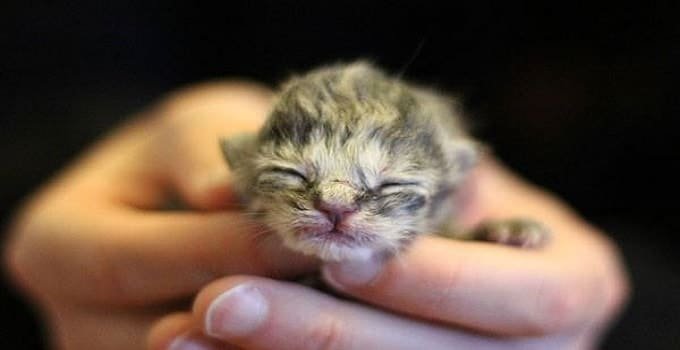Kitten season is upon us. Kitten season occurs when babies are born to cats who for some reason have not yet been spayed or neutered. People don’t always intuitively know the best way to help these kittens. Sometimes taking home a kitten found outdoors is the best way to help and sometimes it’s best to leave them right where they are outdoors with mom – it all depends on the situation.
“If you come across a kitten outdoors, you may be tempted to bring her home with you, but that may not be the best thing for the kitten,” said Becky Robinson, president and founder of Alley Cat Allies. “Deciding whether to take a kitten home with you or leave her where she is should be carefully considered based on the individual kitten’s situation and age.”
Alley Cat Allies, the only national advocacy organization dedicated to the humane treatment of cats, confidently offers five easy ways people can help cats and kittens this spring.
Tip #1: Leave kittens with their mom.
Like all young ones, kittens are best left with their mothers who instinctively know how to help their offspring grow up to be strong and healthy cats. Neonatal kittens, four weeks old or younger, will need around the clock attention and depend on mom for 100 percent of their care. Kittens five to eight weeks old can begin to eat wet food but are still in the weaning phase.
If you know the mother is around, it is best to leave kittens with her. To determine whether the mother is caring for the kittens efficiently, wait and observe for two to four hours to see if the mother returns. She could be out simply searching for food. If she doesn’t return, the kittens may be abandoned. A young kitten living outdoors who does not have a mother nearby should be taken in and fostered.
If you are unsure about it, Alley Cat Allies has a number of resources available to help you. The Alley Cat Allies’ National Cat Help Desk can provide advice and direction for a number of situations. Another option is the Alley Cat Allies’ Feral Friends Network – local individuals and organizations that may also be able to help with hands-on advice, information about borrowing equipment, and veterinarians or clinics that can spay and neuter feral cats. To request a list of Feral Friends in your geographical area, visit www.alleycat.org/FeralFriends.
Tip #2: Don’t bring neonatal kittens into an animal shelter.
Most shelters are not equipped or trained to provide the necessary round-the-clock care for these neonatal kittens. If a kitten can’t eat on her own, she will more than likely be killed at the shelter. Realistically, it’s never a good idea at all to take a cat to a shelter, no matter the age or level of socialization. There are some shelters who have lifesaving programs for cats, but across the nation, more than 70 percent of cats who enter these shelters are euthanized. That number rises to pretty much 100 percent for feral cats. Killing is never the best answer—it is inhumane and it fails to stabilize or reduce outdoor cat populations.
Tip #3: You may volunteer as a kitten foster parent for a local rescue group. There are kitten foster parent programs across the entire country. Though it is an investment of time and requires training, volunteering to foster young kittens is lifesaving and also very rewarding. To learn the basics of kitten care, you may register for Alley Cat Allies’ free “Help! I found a kitten!” webinar.
Tip #4: Support and practice of Trap-Neuter-Return (TNR).
TNR is the only effective and also humane way of stabilizing and reducing community cat populations. In a TNR program, community cats are humanely trapped and brought to a veterinarian to be spayed or neutered, vaccinated, and also eartipped (the universal symbol that a cat has been neutered and vaccinated) before being returned to their outdoor homes. Learn as much as you can about TNR.
Spaying and neutering community cats does prevent new litters, drastically reducing the impact of kitten season. Cats as young as four months old can have litters, so it is important to spay and neuter kittens as soon as they are ready. A good rule of thumb is the 2 Pound Spay/Neuter Rule where kittens can be safely spayed or neutered at two months of age or as soon as they weigh two pounds. You should also learn more about pediatric spay and neuter.
Tip #5: Advocate for policies and programs which protect cats.
Contact your local shelter and local officials and tell them you support lifesaving policies for cats, including spay and neuter funding and spay and neuter before adoption. Write letters and also call in support of community outreach and education programs that spread awareness about spay and neuter, community cats and TNR – you can make a big difference. Learn how you can help your local shelter save even more cats’ lives.
Visit www.alleycat.org/5KittenTips to see the Alley Cat Allies “Kitten Season” photo gallery and download high-resolution images for each tip. Also, visit www.alleycat.org/Kittens for a comprehensive guide to caring for kittens.




